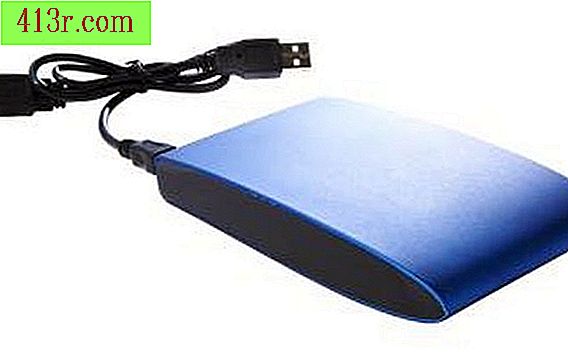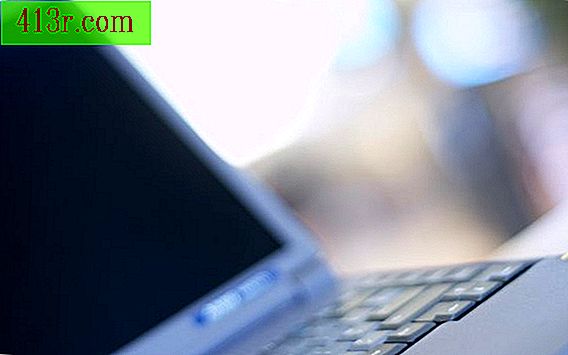Come installare Windows XP su un disco rigido esterno

Modifica i file
Configura il tuo BIOS in modo che l'avvio USB sia abilitato (il BIOS deve supportare l'avvio da USB). Collegare il disco rigido USB esterno direttamente al computer.
Crea un'immagine ISO (un file .iso è un file immagine disco di un disco ottico) dal CD-ROM di Windows XP utilizzando il tuo software preferito. Salvalo sul tuo disco rigido.
Apri il file ISO appena creato. Vai alla cartella I386 e scegli i seguenti file: TXTSETUP.SIF, DOSNET.INF, USB.IN_, USBPORT.IN_ e USBSTOR.IN_. Estrai i file e inseriscili in una cartella con cui lavorare.
Aprire una finestra del prompt dei comandi e utilizzare Cab SDK per estrarre il contenuto dei file .IN_; Cab SDK è un programma di compressione e decompressione Microsoft disponibile sotto forma di file .exe nella directory di Windows. Ciascuno dei file .IN_ contiene esattamente un file inf. Un esempio da riga di comando potrebbe essere: "cabarc x USBSTOR.IN_". Dovresti finire con tre nuovi file nella cartella, chiamati usb.inf, usbport.inf e usbstor.inf. Elimina i file .IN_.
Apri i file usando un semplice editor di testo come Blocco note. Modificali come nella sezione seguente "Modifica i file".
Apri il file ISO creato in precedenza ed elimina i file che hai precedentemente estratto. Sostituiscili con i nuovi file modificati.
Salvare i file ISO e registrarli utilizzando il software di registrazione desiderato.
Inserisci il CD che hai creato e riavvia il PC. Assicurarsi che sia configurato per l'avvio dal CD. La maggior parte dei computer lo farà automaticamente, ma se non lo fanno, premi F8 mentre inizia a scegliere le opzioni di avvio. Quando viene richiesto, selezionare il disco rigido esterno USB per installare Windows XP.
Apri TXTSETUP.SIF e sposta le seguenti voci da [InputDevicesSupport.Load] a [BootBusExtenders.Load]: usbehci = usbehci.sys usbohci = usbohci.sys usbuhci = usbuhci.sys usbhub = usbhub.sys usbstor = usbstor.sys
Sposta le seguenti voci da [InputDevicesSupport] a [BootBusExtenders]: usbehci = "Erweiterter Hostcontroller", files.usbehci, usbehci usbohci = "Apri Hostcontroller", files.usbohci, usbohci usbuhci = "Universeller Hostcontroller", files.usbuhci, usbuhci usbhub = "Standard-USB-Hubtreiber", files.usbhub, usbhub usbstor = "USB-Speicherklassentreiber", files.usbstor, usbstor
Inserire quanto segue nella sezione [HiveInfs.Fresh]: AddReg = hivedef.inf, AddReg AddReg = hivesys.inf, AddReg AddReg = hivesft.inf, AddReg AddReg = hivecls.inf, AddReg AddReg = hiveusd.inf, AddReg AddReg = dmreg .inf, DM.AddReg AddReg = usbboot.inf, usbservices
Inserisci i seguenti comandi nella sezione [SourceDisksFiles]:
[SourceDisksFiles] usbboot.inf = 1,,,,,, x, 3,, 3 bootvid.dll = 1,,,,,, 3, 2, 0, 0,, 1, 2 kdcom.dll = 1,, ,,,, 3_, 2, 0, 0,, 1, 2
Apri DOSNET.INF e modifica la seconda sezione [Files] per renderla simile a questa: [Files] d1, usbboot.inf d1, _default.pif d1, 12520437.cpx d1, 12520850.cpx
Apri USB.INF e modifica le linee nelle sezioni [StandardHub.AddService] [CommonClassParent.AddService] per leggere in questo modo:
[StandardHub.AddService] DisplayName =% StandardHub.SvcDesc% ServiceType = 1; SERVICE_KERNEL_DRIVER StartType = 0; SERVICE_DEMAND_START ErrorControl = 1; SERVICE_ERROR_NORMAL ServiceBinary =% \ usbhub.sys LoadOrderGroup = Boot Bus Extender
[CommonClassParent.AddService] DisplayName =% GenericParent.SvcDesc% ServiceType = 1; SERVICE_KERNEL_DRIVER StartType = 0; SERVICE_DEMAND_START ErrorControl = 1; SERVICE_ERROR_NORMAL ServiceBinary =% \ usbccgp.sys LoadOrderGroup = Boot Bus Extender
Apri usbport.inf e modifica le linee nelle sezioni [EHCI.AddService], [OHCI.AddService], [UHCI.AddService] e [ROOTHUB.AddService] per renderlo simile a questo:
[EHCI.AddService] DisplayName =% EHCIMP.SvcDesc% ServiceType = 1; SERVICE_KERNEL_DRIVER StartType = 0; SERVICE_DEMAND_START ErrorControl = 1; SERVICE_ERROR_NORMAL ServiceBinary =% \ usbehci.sys LoadOrderGroup = Boot Bus Extender
[OHCI.AddService] DisplayName =% OHCIMP.SvcDesc% ServiceType = 1; SERVICE_KERNEL_DRIVER StartType = 0; SERVICE_DEMAND_START ErrorControl = 1; SERVICE_ERROR_NORMAL ServiceBinary =% \ usbohci.sys LoadOrderGroup = Boot Bus Extender
[UHCI.AddService] DisplayName =% UHCIMP.SvcDesc% ServiceType = 1; SERVICE_KERNEL_DRIVER StartType = 0; SERVICE_DEMAND_START ErrorControl = 1; SERVICE_ERROR_NORMAL ServiceBinary =% \ usbuhci.sys LoadOrderGroup = Boot Bus Extender
[ROOTHUB.AddService] DisplayName =% ROOTHUB.SvcDesc% ServiceType = 1; SERVICE_KERNEL_DRIVER StartType = 0; SERVICE_DEMAND_START ErrorControl = 1; SERVICE_ERROR_NORMAL ServiceBinary =% \ usbhub.sys LoadOrderGroup = Boot Bus Extender
Apri usbstore.inf e cambia le linee nella sezione [USBSTOR.AddService] per renderle simili a questa:
[USBSTOR.AddService] DisplayName =% USBSTOR.SvcDesc% ServiceType = 1 StartType = 0 Tag = 3 ErrorControl = 1 ServiceBinary =% \ USBSTOR.SYS LoadOrderGroup = Boot Bus Extender
Crea un nuovo file nella stessa directory degli altri file modificati che si chiama USBBOOT.INF e incolla il seguente contenuto in esso: [usbservices]
HKLM, "SYSTEM \ CurrentControlSet \ Services \ USBSTOR", "DisplayName", 0x00000000, "USB Mass Storage Driver" HKLM, "SYSTEM \ CurrentControlSet \ Services \ USBSTOR", "ErrorControl", 0x00010001, 1 HKLM, "SYSTEM \ CurrentControlSet \ Servizi \ USBSTOR ", " Gruppo ", 0x00000000, " Sistema prenotato "HKLM, " SYSTEM \ CurrentControlSet \ Services \ USBSTOR ", " ImagePath ", 0x00020000, " system32 \ DRIVERS \ USBSTOR.SYS "HKLM, " SYSTEM \ CurrentControlSet \ Services \ USBSTOR ", " Start ", 0x00010001, 0 HKLM, " SYSTEM \ CurrentControlSet \ Services \ USBSTOR ", " Tipo ", 0x00010001, 1
HKLM, "SYSTEM \ CurrentControlSet \ Services \ usbehci", "DisplayName", 0x00000000, "Driver miniport controller host USB 2.0 avanzato" HKLM, "SYSTEM \ CurrentControlSet \ Services \ usbehci", "ErrorControl", 0x00010001, 1 HKLM, "SYSTEM \ CurrentControlSet \ Services \ usbehci ", " Group ", 0x00000000, " Sistema prenotato "HKLM, " SYSTEM \ CurrentControlSet \ Services \ usbehci ", " ImagePath ", 0x00020000, " system32 \ DRIVERS \ usbehci.sys "HKLM, " SYSTEM \ CurrentControlSet \ Services \ usbehci ", " Start ", 0x00010001, 0 HKLM, " SYSTEM \ CurrentControlSet \ Services \ usbehci ", " Tipo ", 0x00010001, 1
HKLM, "SYSTEM \ CurrentControlSet \ Services \ usbhub", "DisplayName", 0x00000000, "Hub USB2 abilitato" HKLM, "SYSTEM \ CurrentControlSet \ Services \ usbhub", "ErrorControl", 0x00010001, 1 HKLM, "SYSTEM \ CurrentControlSet \ Services \ usbhub ", " Gruppo ", 0x00000000, " Sistema prenotato "HKLM, " SYSTEM \ CurrentControlSet \ Services \ usbhub ", " ImagePath ", 0x00020000, " system32 \ DRIVERS \ usbhub.sys "HKLM, " SYSTEM \ CurrentControlSet \ Services \ usbhub ", " Start ", 0x00010001, 0 HKLM, " SYSTEM \ CurrentControlSet \ Services \ usbhub ", " Tipo ", 0x00010001, 1
HKLM, "SYSTEM \ CurrentControlSet \ Services \ usbuhci", "DisplayName", 0x00000000, "Driver USB Universal Host Controller Miniport di Microsoft" HKLM, "SYSTEM \ CurrentControlSet \ Services \ usbuhci", "ErrorControl", 0x00010001, 1 HKLM, "SYSTEM \ CurrentControlSet \ Services \ usbuhci ", " Group ", 0x00000000, " Sistema prenotato "HKLM, " SYSTEM \ CurrentControlSet \ Services \ usbuhci ", " ImagePath ", 0x00020000, " system32 \ DRIVERS \ usbuhci.sys "HKLM, " SYSTEM \ CurrentControlSet \ Services \ usbuhci ", " Start ", 0x00010001, 0 HKLM, " SYSTEM \ CurrentControlSet \ Services \ usbuhci ", " Tipo ", 0x00010001, 1
HKLM, "SYSTEM \ CurrentControlSet \ Services \ usbohci", "DisplayName", 0x00000000, "Driver miniport controller host USB Microsoft Open" HKLM, "SYSTEM \ CurrentControlSet \ Services \ usbohci", "ErrorControl", 0x00010001, 1 HKLM, "SYSTEM \ CurrentControlSet \ Services \ usbohci ", " Group ", 0x00000000, " Sistema prenotato "HKLM, " SYSTEM \ CurrentControlSet \ Services \ usbohci ", " ImagePath ", 0x00020000, " system32 \ DRIVERS \ usbohci.sys "HKLM, " SYSTEM \ CurrentControlSet \ Services \ usbohci ", " Start ", 0x00010001, 0 HKLM, " SYSTEM \ CurrentControlSet \ Services \ usbohci ", " Tipo ", 0x00010001, 1
Elimina i tuoi file .IN_ originariamente estratti. Apri il prompt dei comandi e vai alla cartella con i tuoi file modificati. Esegui questi comandi per riconfezionare i file: cabarc n USB.IN_ usb.inf cabarc n USBPORT.IN_ usbport.inf cabarc n USBSTOR.IN_ usbstor.inf
Questi tre file IN_ devono esistere di nuovo. Torna al punto 6 sopra per finire.







